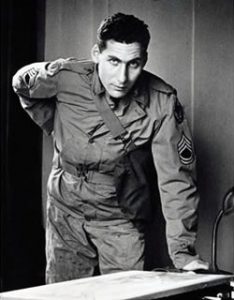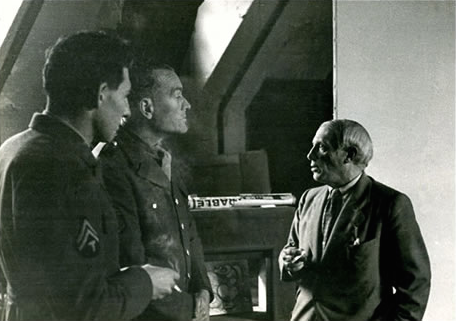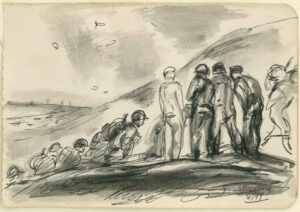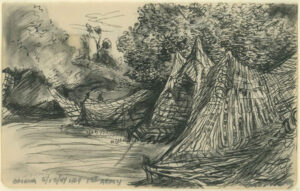 Manuel Bromberg was born in 1917 in Centerville, Iowa. When he was two, he moved with his mother and older brother to Cleveland, Ohio. At age 10 he started taking morning art classes at the Cleveland Museum of Art.
Manuel Bromberg was born in 1917 in Centerville, Iowa. When he was two, he moved with his mother and older brother to Cleveland, Ohio. At age 10 he started taking morning art classes at the Cleveland Museum of Art.
At age 16, Bromberg was the winner of the George Bellows Award, a national art competition among high school students. The first prize included a year’s scholarship to the Pratt Institute in New York City. He declined the prize and stayed at home and accepted a full four-year working scholarship to the Cleveland School of Art.
In 1938 he was selected to be part of the Federal Arts Project’s WPA Easel Program. The main function of this program was to award commissions competitively, based on artistic talent, to decorate public buildings in the forms of murals.
Bromberg was appointed as an official war artist by George Biddle, Chairman of the War Department Art Advisory Board, in 1943. He was assigned to serve in the European Theater of Operations and landed on Omaha Beach in June 1944.
Six days after the initial invasion he noted, “It was an impossible sight. Bodies were still floating in the water. It was a combination of Dante’s Inferno and the biggest junkyard ever seen.” He sketched this scene and subsequent campaigns of the First, Third, and Seventh armies through Normandy, Alsace-Lorraine and Rhineland-Germany with a sketchpad no bigger than 3 inches by 5 inches.
After the liberation of Paris in 1944, Bromberg met with Pablo Picasso and Jean Cocteau in Picasso’s studio. In his own studio in Paris Bromberg finished paintings from his many sketches. His World War II body of work includes more than 100 paintings and sketches and 400 photographs.

Bromberg and Picasso
He was awarded the Legion of Merit for creating an extraordinary graphic record of the war and his work was published in magazines and newspapers, including The New York Times and LIFE.

Omaha Beach. June 1944. Troops reaching summit of hill are greeted by fellow GIs assigned to the beach.

First Army headquartered in an orchard. Normandy. June 13, 1944.
Bromberg’s collection at the Marshall Foundation includes 9 sketches done between 1943 and 1945 from his pocket sketchpad.
